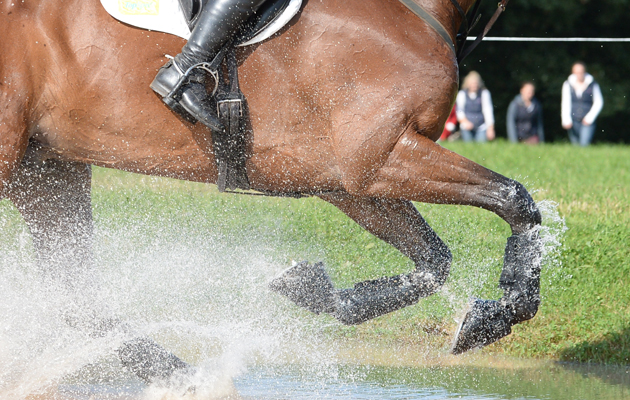Setting strong foundations during the early stages of your horse’s career is crucial. Ben Hobday, who completed his second Badminton CCI4* this year, reveals seven pieces of advice that have helped him produce brave cross-country horses time and time again.
1. Do little and often
You don’t want to jump a horse every day, but schooling near fences on a regular basis is useful because being around other horses and seeing different obstacles becomes normal.
Ben has daily access to a course, but most riders don’t. He says: “Hacking out and finding banks, streams and ditches is just as effective. A young horse will grow in confidence.”
2. Aim for consistency in between fences
Send the canter forward and back during your warm-up to help get the horse listening and his stride adjustable.
“It’s typical of a young horse for the stride to vary,” explains Ben. “They will be travelling forward nicely and then something will distract them — either something in the distance or another horse — and their attention comes off the rider. Keep your aids consistent to get the focus back.”
3. Teach a horse to be brave
This is achieved through repetition.
“Would you jump a fence if you didn’t have any power or rhythm? I wouldn’t,” says Ben. “When I kick the horse should take me forward every time.
“It’s easy to ruin a horse’s confidence, but not so easy to fix it. If you ride positively and consistently, the horse knows what you’re expecting of him. I think it’s better to ride consistently badly than inconsistently, because then the horse is always clear.”
4. Ask questions
Simple questions that are easy for the horse to answer will help him learn and boost confidence. For example, rather than approaching a fence on a long, straight line every time, try turning to it off a tighter bend.
“You have to ask questions of young horses to help them learn, but in a way that if they get the answer wrong they won’t lose confidence.”
Continued below…

10 ways to improve your cross-country timing this season
Even at BE100 getting your timing wrong can scupper your hopes of success. We asked the experts for their tips
5. Never waver off a line
Pick your line and insist the horse stays on it. On landing, continue in a straight line until you say otherwise.
“This is a common mistake,” says Ben. “Without thinking about it the rider lets the horse turn and doesn’t correct them — then wonders why they can’t travel straight to a fence on a related distance. You must be consistent whether you are training or at an event.”
6. Don’t panic
It is natural for a young horse to back off a new fence, which is why your leg must always be on, supporting and encouraging him forward.
“When the horse looks to you for confidence, he gets that from your aids being clear,” explains Ben. “For some riders it might be tempting to flap with your arms, but forwardness only comes from your leg. Anything else distracts the horse.”
7. Be firm, but kind
Ben allows his horses to take the rein forward and look down as they approach water, but they aren’t allowed to stop moving.
“Contact is important because if you drop the rein, a horse’s natural reaction is to suck back and then you’ve lost all connection,” says Ben. “Keep the leg on all the way through, so that if the horse hesitates at any point you are still telling him to go.”




